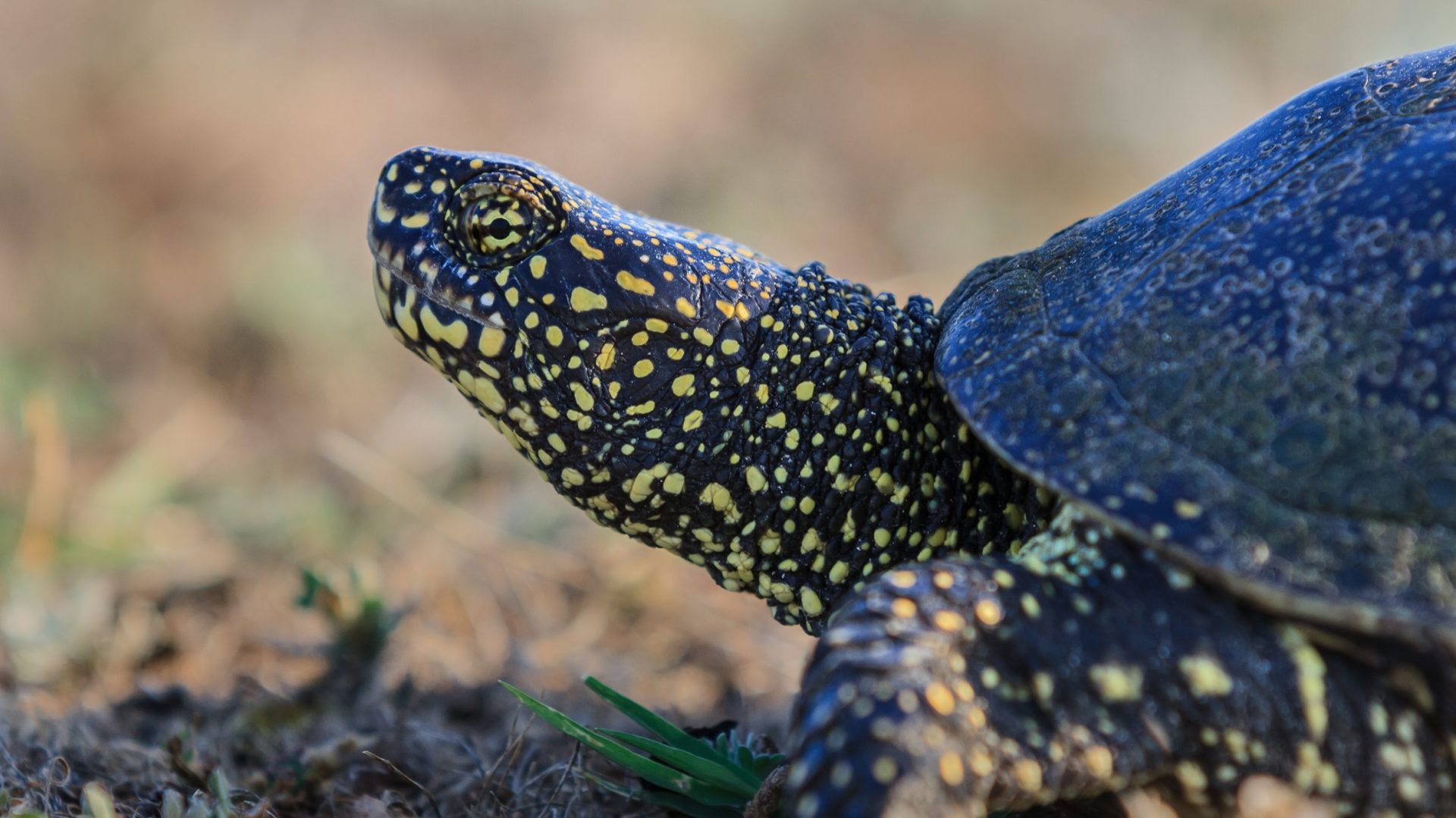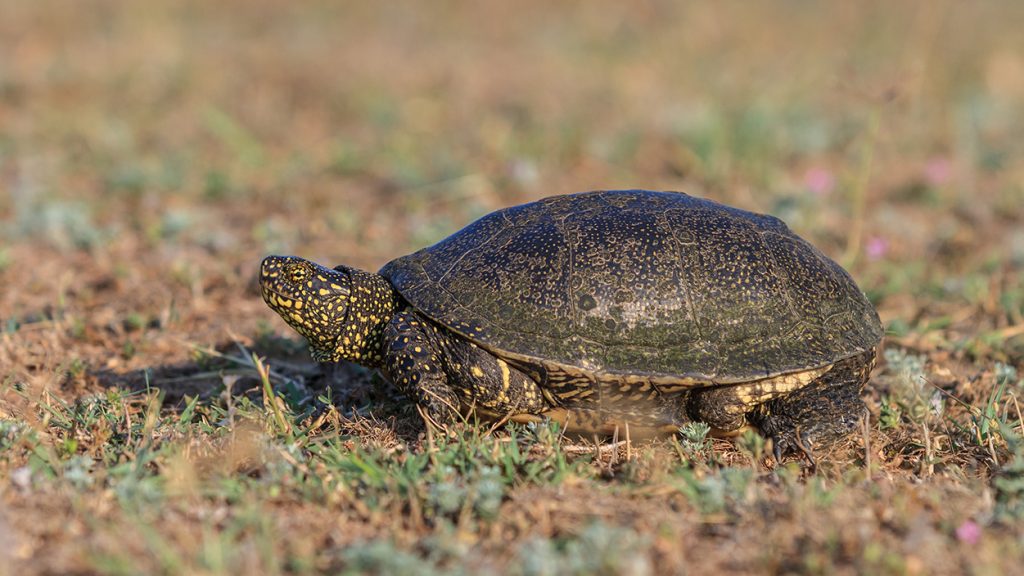Observing the European pond turtle can be a challenge. Not only because it has become rarer in Portugal – it is an endangered species – but also because it is a shy animal and can spend part of the year in hibernation.
The European pond turtle (Emys orbicularis) owes its Portuguese name (“striped shell turtle”) to the yellow stripes and spots on its shell, head, legs, and tail. A species of diurnal habits, it can hibernate at the coldest time of the year or enter a type of dormancy (known as aestivation) if the area where it lives is dry.
Normally, it remains active from March to September, months in which, with any luck, it is possible to see it near areas of calm or still water, permanent or temporary, such as streams with little current, ponds, marshes, and lagoons surrounded by vegetation. More common in fresh water, it can also live in brackish water areas.
This turtle is classified as an “endangered” species on the mainland, mainly due to the low population density and the fact that its distribution is dispersed across the country, with small and isolated populations. There are several factors that help to explain their decline in the various areas of its distribution, such as pressure from agriculture and urbanisation, the alteration and pollution of aquifers or situations of prolonged drought, which alter their habitats and breeding sites.
The fact that female European pond turtle reach sexual maturity relatively late (between 10 and 12 years old) and fertility rates are low does not help populations to recover from external threats. On the other hand, the species has a high infant mortality rate, and it is estimated that only one in every 100 young turtles reaches adulthood. Still, their average lifespan is long: between four and six decades in the wild.
In addition to these elements, it is also necessary to account for the capture of animals for commercial purposes and the introduction of exotic species, which compete in particular for both space and food. As for its diet, that of the European pond turtle is varied, and is based on small fish, aquatic invertebrates, and also some vegetation.





